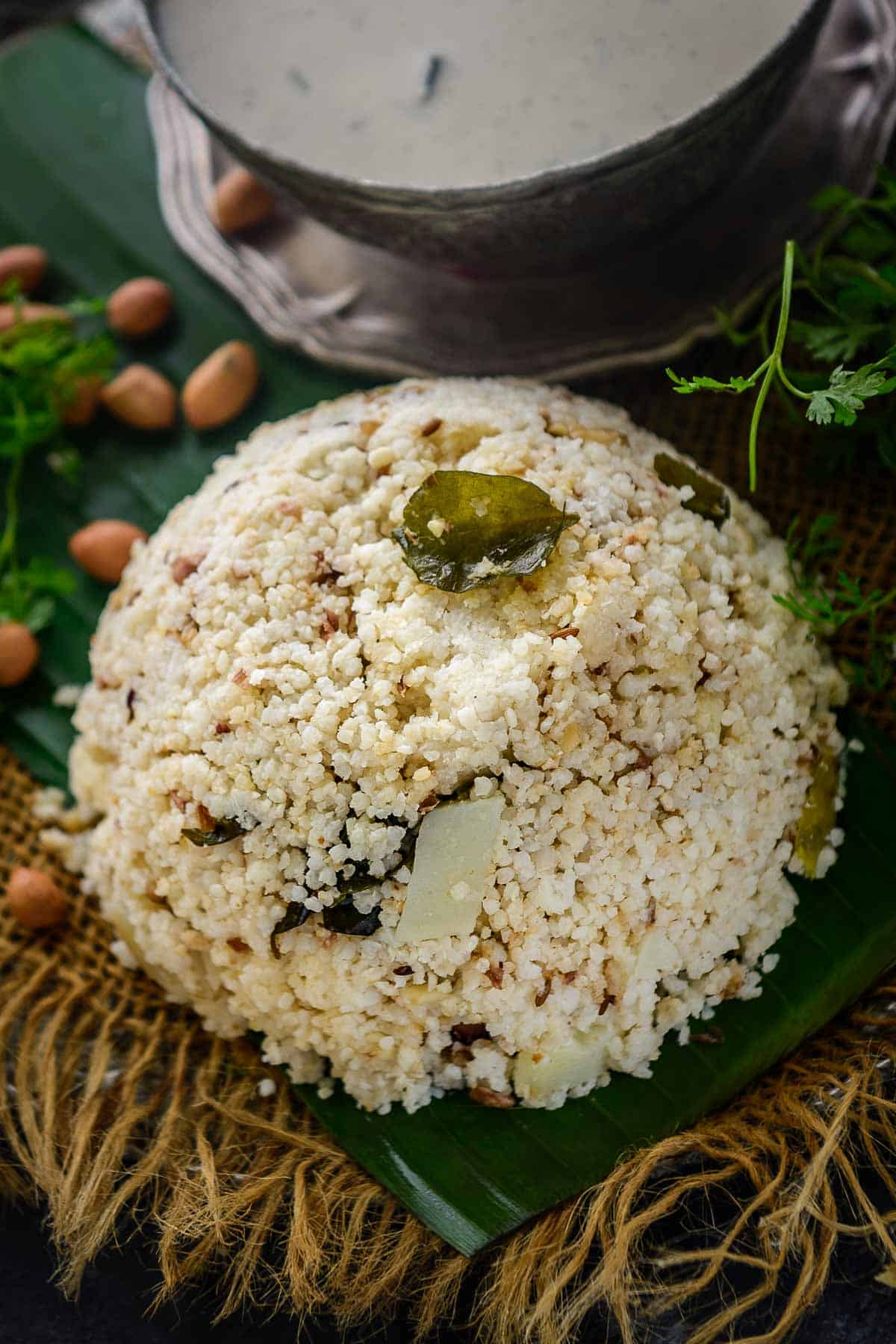on Sep 22, 2021, Updated Jun 25, 2023
About Bhagar
Bhagar is a traditional Indian gluten-free grain, and it is a part of the millet family. Barnyard millet can be cooked in multiple ways. You can make sweets like kheer, phirni, etc., using it or savories like this khichdi I shared in this post. This grain can be had for vrat as it is gluten-free. Since cereal-based grains are not consumed during fasting days, bhagar, which belongs to the millet family, stands out as a perfect substitute for all sorts of rice dishes that we usually make for lunch and dinner. Making this millet khichdi is super easy and very quick. Although it is a preferred recipe for vrat days, you can make it any time. If you make it for non-fasting days, add some vegetables and potatoes and flavor it with powdered spices for a taste change. Here are some more millet recipes that you might like: Thinai Pongal, Ragi Malt, Ragi Idli, and Bajre ki Khichdi.
Ingredients
Bhagar is also known as Moraiyo or Moraiya in Hindi and Barnyard Millet in English. It is called Bhagar, particularly in Maharashtra. Sama, sama ke chawal, vari, varai, samak, samvat, variche tandul, vrat ke chawal are some of the local names by which this grain is known in different places across India. Use organic barnyard millet for the best taste and texture. You will find it in any Indian grocery store. Ghee – Make this dish in ghee for the best taste. You can cook it in oil, too. Potatoes – Potatoes give a nice texture and taste to this khichdi. If you are not making it for fasting days, then you can also add other veggies like green beans, cauliflower, carrots, etc. Green Chilies – Adjust them according to your taste. Others – You will also need cumin seeds, curry leaves, raw peanuts, sendha namak (rock salt), water, and cilantro (fresh coriander leaves). If making it for non-fasting days, you can use regular salt instead of rock salt.
How To Make Bhagar
Add 1 cup bhagar to a fine-mesh strainer and wash it well under running water. Drain well and set aside. Heat 1 tablespoon ghee in a pan over medium heat. Once the ghee is hot, add
1 teaspoon cumin seeds 10-12 curry leaves 2-3 green chilies (slit into half)
and let them crackle for 4-5 seconds. Add ¼ cup coarsely crushed raw peanuts and fry until they turn brown (1-2 minutes). Add ½ cup peeled and cubed potatoes (½ inch cubes) and saute for a minute. Now add the washed bhagar and ½ teaspoon of rock salt to the pan. Add 2 and ½ cups of water and mix gently. Cover the pan with a lid and cook it undisturbed on low heat until the bhagar is softened and all the liquid is absorbed (15-20 minutes). Remove the pan from the heat and let it rest for 5 minutes. Fluff the bhagar with a fork gently. Garnish with 1 tablespoon chopped cilantro and serve hot.
Serving Suggestions
It is traditionally served with Shengdana Amti (peanut soup) and upasachi batata bhaaji (potato curry made especially for fasting days). Bhagar is high in fiber and carbohydrates, and danyachi amti is rich in protein. This combination makes a wholesome meal to serve during fasting days. Buttermilk, yogurt (dahi), or any raita of your choice perfectly complements it.
Storage Suggestions
You can store it in an airtight container in the refrigerator for up to 2-3 days. I do not recommend freezing it as it might dry and be tasteless.
You Might Also Like
















